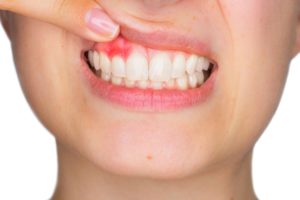 Gum disease is the inflammation and infection of the gums and the surrounding tissue. Generally caused by bacterial plaque, it is the most significant cause of adult tooth loss.
Gum disease is the inflammation and infection of the gums and the surrounding tissue. Generally caused by bacterial plaque, it is the most significant cause of adult tooth loss.
How Gum Disease Develops
Plaque, a thin, colourless film, is caused by bacteria in your mouth, and it develops on your teeth. If left untreated, bacterial plaque will harden to tartar. A rough, porous mineral buildup usually yellow or brown, tartar forms at and underneath the gum line. Tartar excretes the toxins that cause gum inflammation, resulting in the development of periodontal pockets that hold even more toxins and bacteria. This condition can lead to the loosening of the teeth, or also make teeth fall out. As the condition worsens, the accumulated toxins and bacteria move deeper into the jaw to destroy the bone that holds your teeth in place.
What to Look For
Stopping the progression of gum disease before it can save patients added time, discomfort and expense. Signs of gum disease can include:
- Red, inflamed gums
- Bleeding while brushing or flossing
- Receding gums
- Loose or separating teeth
- Presence of pus between the gums and teeth
- Chronic halitosis
Gum disease can wreak havoc on your mouth, but it can also cause other health concerns. Research has linked gum disease to problems such as heart disease, osteoporosis, stroke and complications of diabetes. Because the symptoms are initially mild, many people don’t realize they have gum disease, which can allow the condition to worsen. You may have an increased risk of gum disease if you smoke, have diabetes, take certain medications, endure excessive stress, or don’t eat properly.
Treating Gum Disease
Periodontics is the area of dentistry that focuses on gum disease treatment. If caught in the early stages, your dentist can reverse gum disease. To begin, the dentist will scale the teeth to remove plaque and calculus and plane the roots to smooth them. The doctor may also prescribe antibiotics to clear up any infection or inflammation. Advanced cases may require your dentist to trim the gums surgically, disinfect the tissue, remove the hardened plaque build-up, and recontour the damaged bone.
When you are ready to get the treatment for gum disease started, call your dentist and schedule an appointment. If you do not have a dentist, now is the time to find one!
About Dr. Joseph Salvaggio

Located in Brampton, Ontario Dr. Joseph Salvaggio has been practicing general, cosmetic, and implant dentistry for over 20 years. He enjoys interacting with his patients and helping to restore their oral health for better overall health as well. Meeting new patients, interacting and educating them is one of Dr. Salvaggio’s biggest joys. We encourage you to read our reviews or call us with any dental questions you have. We look forward to speaking with you and meeting you soon.
